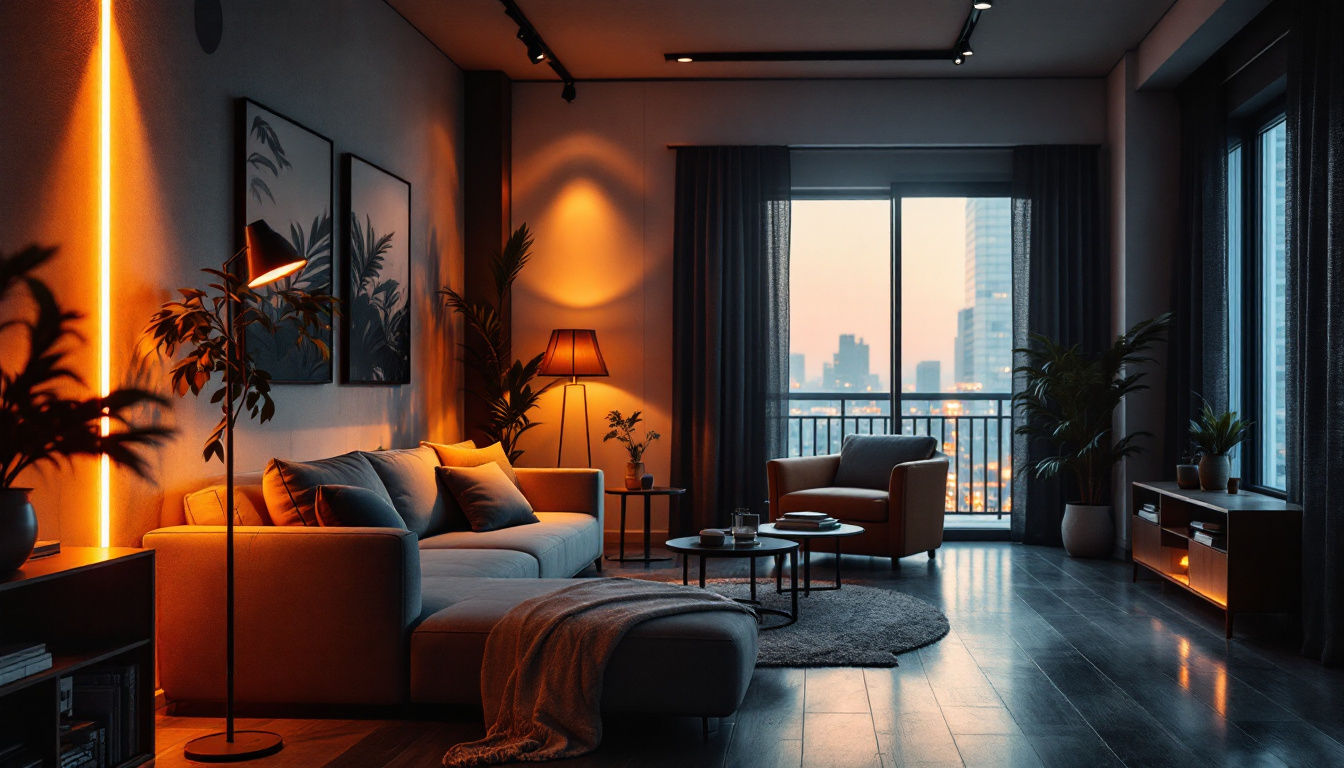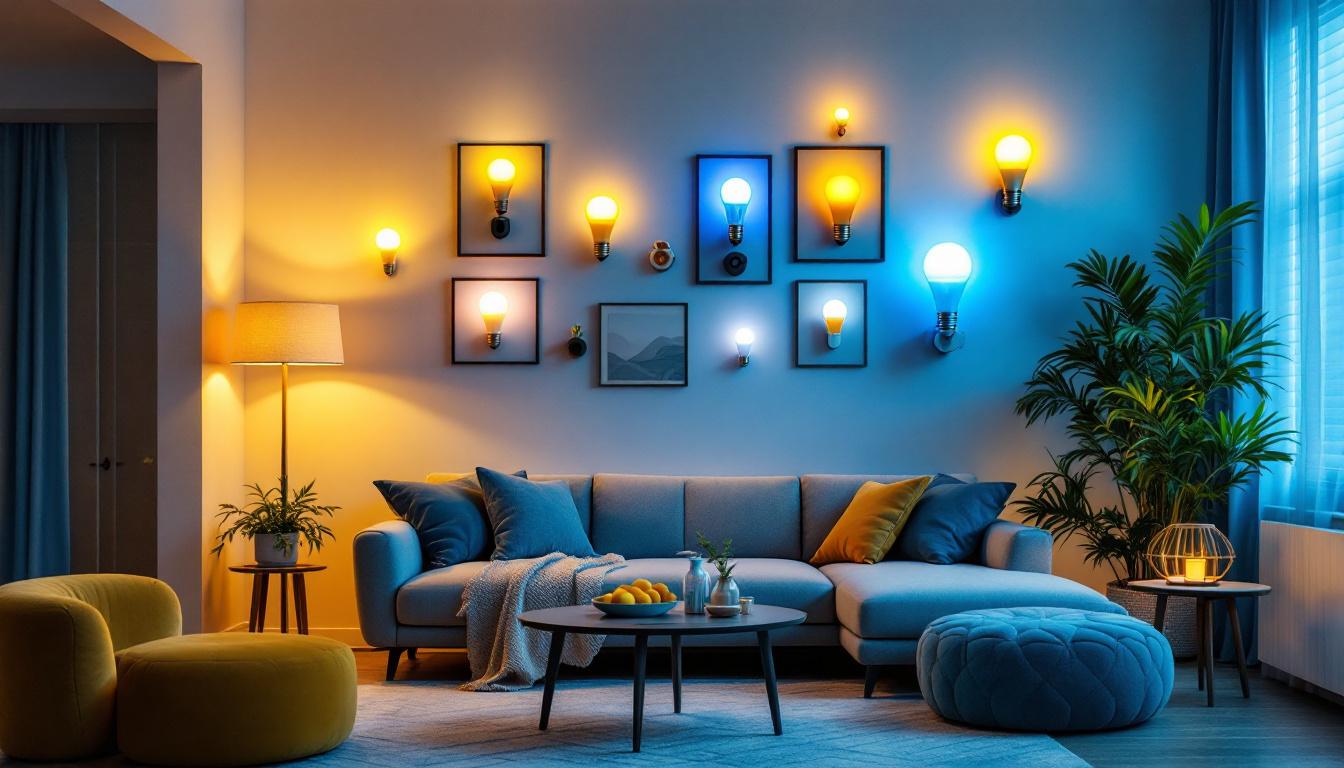
In the ever-evolving world of lighting design and installation, ensuring that your team is well-trained is crucial for success. Proper training not only enhances the skills of your workforce but also improves the quality of service provided to clients. This article delves into effective strategies and best practices for training your team in lighting, with a focus on the unique offerings of Ilp Lighting.
Before diving into advanced techniques and technologies, it is essential for your team to grasp the fundamental concepts of lighting. This foundational knowledge serves as the bedrock upon which more complex skills can be built. A solid understanding of lighting principles not only enhances the aesthetic quality of a space but also contributes to the overall functionality and comfort of the environment.
There are three primary types of lighting: ambient, task, and accent. Ambient lighting provides overall illumination, task lighting focuses on specific areas for activities, and accent lighting highlights particular features. Training your team to recognize these types is vital for effective design and installation.
Each type of lighting has its own purpose and application. For instance, understanding where to use task lighting can significantly enhance productivity in workspaces, while accent lighting can elevate the aesthetic appeal of residential and commercial properties. A comprehensive training program should cover these distinctions in detail. Moreover, incorporating real-world examples and case studies can help your team visualize how these lighting types interact within various environments, reinforcing the importance of thoughtful design.
Color temperature, measured in Kelvin, affects the mood and functionality of a space. Warmer tones (around 2700K) create a cozy atmosphere, while cooler tones (above 5000K) promote alertness and focus. Additionally, the Color Rendering Index (CRI) measures how accurately colors appear under a light source compared to natural light.
Training sessions should include practical demonstrations of how different color temperatures affect various environments. Understanding CRI is also crucial, especially when selecting lighting for retail spaces or art galleries, where color accuracy is paramount. Furthermore, exploring the psychological effects of color temperature can provide deeper insights into how lighting influences human behavior and emotions. For example, studies have shown that cooler lighting can enhance concentration in educational settings, while warmer lighting can foster relaxation in residential areas. By integrating this knowledge into your training, your team will be better equipped to make informed lighting choices that cater to the specific needs of each space.
While theoretical knowledge is essential, hands-on training allows team members to apply what they have learned in real-world scenarios. This approach not only reinforces learning but also builds confidence in their skills. By engaging in practical exercises, team members can better retain information and develop a deeper understanding of the subject matter, which is crucial in fast-paced environments where adaptability is key.
Organizing workshops where team members can experiment with different lighting fixtures and setups can be incredibly beneficial. These sessions should include demonstrations of how to install various types of lighting, as well as troubleshooting common issues. Additionally, incorporating interactive components, such as group challenges or competitions, can further enhance engagement and motivation. Team members can be tasked with creating unique lighting designs within a set timeframe, encouraging creativity while reinforcing technical skills.
Encouraging team members to participate in these workshops fosters a collaborative learning environment. Sharing experiences and solutions can lead to innovative approaches to lighting design and installation. Moreover, inviting guest speakers or industry experts to share their insights can provide fresh perspectives and inspire team members to think outside the box. This exposure to diverse ideas can be instrumental in cultivating a culture of continuous improvement and innovation within the team.
Taking your team on site visits to observe installations in progress can provide invaluable insights. This exposure allows them to see how theoretical concepts are applied in practice, and it can spark discussions about best practices and potential challenges. Observing seasoned professionals at work can also help newer team members understand the nuances of the job that are often not covered in training manuals, such as the importance of safety protocols and the need for adaptability in unexpected situations.
Real-world applications also help team members understand the importance of customer needs and preferences. Engaging with clients during these visits can enhance communication skills and improve customer service. By witnessing firsthand how client feedback shapes the installation process, team members can learn to anticipate customer concerns and tailor their approaches accordingly. This not only strengthens client relationships but also empowers team members to take ownership of their projects, fostering a sense of pride and accountability in their work.
Incorporating technology into training programs can significantly enhance learning experiences. From virtual reality simulations to online courses, technology offers innovative ways to engage your team. By leveraging these tools, organizations can create dynamic training environments that cater to diverse learning styles, ensuring that all team members can thrive and contribute effectively.
Virtual reality (VR) can provide immersive training experiences that allow team members to visualize and manipulate lighting designs in a controlled environment. This technology can simulate various scenarios, helping trainees understand the impact of different lighting solutions without the need for physical materials. For instance, a VR training module might allow users to experiment with lighting setups in a virtual theater or gallery, enabling them to see firsthand how different configurations affect ambiance and visibility.
Using VR for training can also reduce costs associated with materials and travel, making it an efficient option for larger teams. As technology continues to advance, incorporating these tools into training programs will become increasingly important. Moreover, VR can facilitate real-time feedback, allowing trainers to assess performance and provide guidance instantaneously. This immediate interaction can enhance the learning curve, making it easier for trainees to grasp complex concepts and apply them in real-world situations.
Online learning platforms offer flexibility, allowing team members to learn at their own pace. These platforms can host a variety of courses covering topics from basic lighting principles to advanced design techniques. Incorporating online modules into your training program can ensure that all team members have access to the same high-quality educational resources. Additionally, many platforms include interactive elements such as quizzes, discussion forums, and multimedia content that can enrich the learning experience and promote engagement.
Encouraging team members to complete online courses can also foster a culture of continuous learning. Providing incentives for completing these courses can motivate employees to expand their knowledge and skills. Furthermore, organizations can track progress through analytics provided by these platforms, allowing them to identify knowledge gaps and tailor future training sessions accordingly. This data-driven approach not only enhances the effectiveness of training programs but also empowers employees to take ownership of their professional development, ultimately leading to a more skilled and adaptable workforce.
Creating an environment that encourages ongoing education and skill development is essential for maintaining a competitive edge in the lighting industry. A culture of continuous learning not only benefits individual team members but also enhances the overall performance of the organization.
Scheduling regular training sessions can help keep your team updated on the latest trends, technologies, and best practices in lighting. These sessions can take various forms, including guest lectures, hands-on workshops, or even informal lunch-and-learns.
Regular training not only reinforces existing knowledge but also introduces new concepts that can inspire creativity and innovation. Keeping the training sessions engaging and varied will help maintain interest and enthusiasm among team members.
Encouraging team members to share their knowledge and experiences can foster a collaborative learning environment. This can be achieved through team meetings, where individuals can present on specific topics or share insights from recent projects.
Creating a platform for knowledge sharing not only enhances learning but also builds camaraderie within the team. It encourages individuals to take ownership of their learning journey and empowers them to contribute to the growth of their peers.
Implementing a training program is only the first step; evaluating its effectiveness is crucial for ensuring that it meets the needs of your team and the organization. Regular assessments can help identify areas for improvement and ensure that training objectives are being met.
Establishing feedback mechanisms allows team members to provide input on the training process. This can include surveys, one-on-one discussions, or anonymous suggestion boxes. Gathering feedback helps identify what is working well and what may need adjustment.
Encouraging open communication about training experiences can lead to valuable insights. Team members may have suggestions for topics that need further exploration or ideas for improving the training format.
Tracking performance metrics before and after training sessions can provide a quantitative measure of effectiveness. Metrics such as project completion times, customer satisfaction ratings, and error rates can help gauge the impact of training on overall performance.
By analyzing these metrics, organizations can make informed decisions about future training initiatives and allocate resources effectively. Continuous evaluation ensures that the training program evolves to meet the changing needs of the industry.
Training your team in lighting is not just a one-time event; it is an ongoing process that requires commitment and resources. By focusing on foundational knowledge, hands-on experience, and the integration of technology, organizations can create a robust training program that enhances the skills of their workforce.
Fostering a culture of continuous learning and regularly evaluating training effectiveness will ensure that your team remains at the forefront of the lighting industry. With a well-trained team, organizations can deliver exceptional service to clients, ultimately leading to greater satisfaction and success.
Investing in training is an investment in the future of your organization. By prioritizing education and skill development, lighting contractors can navigate the complexities of the industry with confidence and expertise.
Ready to elevate your lighting projects with the best in spec-grade lighting products? Look no further than LumenWholesale, where we provide contractors with exceptional quality at wholesale prices that can’t be beaten. Say goodbye to unnecessary markups and hello to a vast selection of reliable lighting solutions that meet the highest industry standards. Make your next purchase count and take advantage of our hassle-free bulk buying with free shipping. Don’t compromise on quality or value—discover the unbeatable wholesale lighting deals at LumenWholesale today.

Discover innovative strategies to future-proof your lighting projects with tape-light technology.

Illuminate your garage with precision using our ultimate LED lighting contractor checklist.

Discover how 24 LED bulbs can transform your lighting solutions with energy efficiency, enhanced brightness, and cost-effectiveness.

Discover the top challenges lighting contractors face when working with recessed lighting cans.